This article was co-authored by Pouya Shafipour, MD, MS. Dr. Pouya Shafipour is a Family Medicine Specialist, Primary Care Physician, and a Weight Loss Specialist based in Santa Monica, California. Dr. Shafipour specializes in dietary, nutritional, behavioral, and exercise counseling to manage obesity and medical conditions related to excessive weight gain or loss. Dr. Shafipour received a BS in Molecular and Cell Biology from the University of California, Berkeley, an MS in Physiology and Biophysics from Georgetown University, and an MD from the Loma Linda University School of Medicine. He completed his internship in general surgery at UC Irvine and a residency in family medicine at the University of California, Los Angeles, and became board certified in family medicine in 2008.
There are 16 references cited in this article, which can be found at the bottom of the page.
wikiHow marks an article as reader-approved once it receives enough positive feedback. This article received 51 testimonials and 83% of readers who voted found it helpful, earning it our reader-approved status.
This article has been viewed 2,844,438 times.
If you want to lose weight, know that you’re embarking on a long-term journey with significant health benefits. Instead of going on a drastic fad diet, focus on making small changes to your diet and lifestyle to meet modest weight loss goals at first. Focus on eating whole, healthy foods and getting physically active. Keep track of your progress and update your goals as you start to see some results and within a few months you’ll be well on your way to a healthier, happier you!
Steps
Managing Your Weight-Loss Goals
-
1Use a BMI scale to determine a healthy target weight for your height. Look online for a Body Mass Index (BMI) chart. Find your current height and age in the list or enter them into a form. You’ll see 3 weight ranges labeled “normal” or “healthy,” “overweight,” and “obese.” If your current weight falls within either of the latter 2 categories, look towards the higher end of the “normal” weight category to determine what weight you’d like to reach.[1]
- If you’re already within the “normal” weight category, weight loss may not be healthy for you. Speak with a doctor before making any changes to your diet or lifestyle.[2]
- Keep in mind that your natural body type will determine how your weight is distributed. Don’t expect to look like another person with the same height and weight; each body is different.
-
2Set small, manageable goals at the start of your weight loss program. Instead of starting off with a highly ambitious or near-impossible weight loss goal like dropping 100 lb (45 kg) by the end of the season, begin with a small goal that you can realistically achieve.[3] In general, most teens can aim to lose 1 to 2 lb (0.45 to 0.91 kg) per week, which will quickly add up over the weeks and months.[4] Set yourself a small goal to lose between 5 to 10 lb (2.3 to 4.5 kg) in your first month.
- When you see smaller amounts of weight drop off, you’ll start to feel more motivated to set and achieve new goals as time goes on.
- Don't be disheartened if you don't lose any weight in the first week. Stay positive and stick to your plan and you’ll gradually start to see results.
Advertisement -
3Keep a food and fitness diary to track your progress. By writing down each item you consume on a daily basis, you’ll instantly become more aware of how quickly the calories can add up. Write a log of everything you eat, every exercise you do, and any weights or body measurements you take. Add up your total calorie intake at the end of each day and note how many calories you burned through exercise. Make note of any diet or lifestyle changes and refer back to the log to observe your progress.[5]
- Try using a website or weight loss app to help record your diet and exercise. Many of these tools automatically estimate the amount of calories consumed or worked off for each line item.
- Analyze the contents of your food diary to see what’s working and what isn’t so you can adapt accordingly. For instance, if you notice that you always have a vending machine snack after swim practice, you can start bringing a piece of fruit along so you have something healthier to eat.
-
4Weigh yourself once per week in the morning. Step onto the scale on the same day each week, at the same time. To get the most consistent reading, weigh yourself in the morning before you eat breakfast and after you go to the bathroom. Measure around your waist, hips, thighs and upper arms, too, so you can see where you’ve lost fat.
- Weighing yourself every single day can lead to what scale obsession, or an unhealthy fixation on daily results. Water retention in the body can add as much as five pounds per day, so the scale can also be somewhat misleading.
- Remember that weight loss is an ongoing process. Developing healthy habits and losing weight takes months and years; it won’t happen in a matter of days.
-
5Be kind to yourself along your weight loss journey. Emotions and stress can make weight loss feel like an uphill battle.[6] But with a realistic set of small, manageable goals and a system for tracking your ongoing progress, focus on keeping a positive outlook. Celebrate each minor and major success and forgive yourself if you fall short of your goals or slip up from time to time.
- If you spend a day vegging in front of the TV instead of hitting the gym, don't beat yourself down. If you indulged in a bunch of junk food after a stressful exam, don't worry too much. Just make a commitment to getting back on track tomorrow!
Following a Healthy Diet
-
1Give your body the right number of calories every day. The amount of calories you’ll need to consume on a daily basis depends on your age, sex, height, and on how active your lifestyle is. Teen boys need anywhere from 2,000 to 3,000 calories per day while teen girls require 1,600 to 2,400 calories per day.[7] Look online for charts listing caloric intake recommendations or speak with a doctor to determine a target number. Then, as you plan your meals and track your daily intake with your food diary, aim to eat no more than your target number of calories.
- A 14-year-old boy who’s heavily involved in sports might need up to 3,000 calories, whereas his classmate who doesn’t lead a very active lifestyle might need only 2,000. However, a 14-year old girl with a moderately active lifestyle would need about 2,000 calories per day as well.
- If you do eat too many calories on Monday, don’t restrict your intake on Tuesday. This will only result in an unhealthy cycle of overeating and starving yourself.
-
2Cut sugary drinks out of your diet. Avoid drinking soda, sports and energy drinks, fruit juice, and sugary frozen drinks. Instead, stick with water or sugar-free beverages. Instead of drinking fruit juice from concentrate, try making your own fresh fruit juice at home with a juicer. Drink low-fat milk, too, to get some calcium into your diet.[8]
-
3Drink about 8 glasses of water each day to stay hydrated. Keep a water bottle with you all day long and refill it frequently so you consume the equivalent of 8 8 fl oz (240 mL) glasses of water every day.[9]
- For some flavor, try making fruit-infused water or brewing fruit tea which can be enjoyed hot or iced.
- Drinking enough water throughout the day will help you feel more full.
-
4Reduce your portion sizes at each meal. Ask for smaller portions at meal times or dish yourself about 30 to 50% less than you’d normally take. Limit the amount of food on your plate so you’re not tempted to clear your plate.[10] Try eating on a smaller plate, too.[11] Remember that you can always go back for more if you’re still hungry or if you haven’t eaten enough calories.
- Instead of taking a whole chicken breast at dinner, cut it in half and save the rest for tomorrow’s meal.
- Tell the lunch lady that you only want 1 scoop of casserole instead of the usual 2.
- Having less food on your plate doesn’t mean you have to eat it fast. Chewing slowly will make your meal last longer and will help you lose weight. Also, by chewing thoroughly, your body will more easily digest the food you’re eating.[12]
-
5Fill your diet with whole foods, fresh fruits and veggies, and lean protein. Steer clear of processed snacks, sweet baked goods, and greasy junk foods. Aim to eat 5 servings of fruit and vegetables each day, and try to have them make up half of each meal. Opt for whole-grain bread, rice, and pastas as well as lean proteins like poultry and fish. End your meals with naturally sweet fruits instead of sugary desserts.[13] .[14]
- Pick baked, grilled, or steamed proteins over fried or breaded foods.
- Look for “light” or “low-calorie” options on restaurant menus when you go out to eat. This will ensure that you still have a great time and a delicious meal while sticking to your weight loss plan.
- It’s okay to enjoy sweet treats in moderation. You don’t need to cut your favorite pizza joint out of your life or refuse your friend’s birthday cake. Have a slice every once in a while, but stick to just the 1 slice. Skip the soda and swap potato chips for carrots to make your overall meal healthier.[15]
-
6Avoid eating when you’re full or feeling down. During a meal, pay attention to how your stomach feels. As soon as you start to feel full, put down your utensils and clear your plate so you aren’t tempted to keep eating. If you’re bored, upset, or tired, don’t pick up a snack just to pass the time.[16]
- Avoid indulging in midnight snacks; drink water or herbal tea to quench your cravings instead.
- If your friends tend to snack on junk foods, offer to bring a healthier snack like hummus for everyone to share.
-
7Eat 3 meals a day plus 1 or 2 healthy snacks. Refrain from skipping meals or starving yourself. Even if you have a busy lifestyle, focus on eating 3 complete but well-portioned meals throughout the day. If necessary, wake up 15 minutes earlier so you can have a nourishing breakfast of eggs, Greek yogurt, or fortified cereal and fresh fruit. In between meals, consume 1 or 2 high-fiber or high-protein snacks to help you stay full. [17]
- Try munching on an apple, a packet of unsalted nuts, or a granola bar in between meals.
Getting Physically Active
-
1Complete 1 hour of moderate physical activity each day. Before or after school, carve out some time for exercise.[18] It doesn't matter if you lift weights, walk around your neighborhood, swim, or jog on a treadmill; you’ll lose weight if you stay moving for about 60 minutes each day and burn more calories than you consume.
- Small spurts of exercise quickly add up. Try signing up for a 30-minute gym class at school, doing 10 minutes of basic stretches and aerobic exercises as soon as you get home, and going for a 20-minute run with your family dog in the evening.
- Rather than playing soccer video games with your friends after school, suggest that you all go out to the park and kick around a soccer ball.
-
2Join a sports team, gym, or fitness club to develop a fitness routine. Sports teams, group fitness classes, and clubs can make exercise more fun and will hold you accountable. Find an activity you enjoy and sign up for a group through your school or local community.[19]
- Consider a competitive sporting team, an intramural sports team, or a group that just plays for fun.
- Don’t be discouraged if the first few sessions of your fitness class are really tough. You’ll build strength and stamina as the weeks go by.
-
3Walk, stand, and take the stairs when you can. Use a phone app or fitness tracker to calculate your daily step count. Start with a relatively low step goal, and each week increase it so you walk a little further.[20] At home, work, and school, take the stairs rather than the elevator or escalator. When you’re watching TV or studying for an exam, do this standing up. Or turn on your favorite song and dance around your room for a few minutes.
- Walk at a brisk pace but slow down if you start getting out of breath.
- Instead of slouching, stand or sit up straight to engage your core muscles. Standing will burn more calories than sitting.[21]
- Rather than taking the bus or catching a ride to school, try bicycling to and from school if you live nearby.[22]
Sample Diet Plan
Lose Weight the Right Way with this Expert Series
Expert Q&A
Did you know you can get expert answers for this article?
Unlock expert answers by supporting wikiHow
-
QuestionWhat's the best diet for a teenager?
 Pouya Shafipour, MD, MSDr. Pouya Shafipour is a Family Medicine Specialist, Primary Care Physician, and a Weight Loss Specialist based in Santa Monica, California. Dr. Shafipour specializes in dietary, nutritional, behavioral, and exercise counseling to manage obesity and medical conditions related to excessive weight gain or loss. Dr. Shafipour received a BS in Molecular and Cell Biology from the University of California, Berkeley, an MS in Physiology and Biophysics from Georgetown University, and an MD from the Loma Linda University School of Medicine. He completed his internship in general surgery at UC Irvine and a residency in family medicine at the University of California, Los Angeles, and became board certified in family medicine in 2008.
Pouya Shafipour, MD, MSDr. Pouya Shafipour is a Family Medicine Specialist, Primary Care Physician, and a Weight Loss Specialist based in Santa Monica, California. Dr. Shafipour specializes in dietary, nutritional, behavioral, and exercise counseling to manage obesity and medical conditions related to excessive weight gain or loss. Dr. Shafipour received a BS in Molecular and Cell Biology from the University of California, Berkeley, an MS in Physiology and Biophysics from Georgetown University, and an MD from the Loma Linda University School of Medicine. He completed his internship in general surgery at UC Irvine and a residency in family medicine at the University of California, Los Angeles, and became board certified in family medicine in 2008.
Board Certified Family Medicine Specialist
-
QuestionWhy does my daughter constantly want to lose weight?
 Pouya Shafipour, MD, MSDr. Pouya Shafipour is a Family Medicine Specialist, Primary Care Physician, and a Weight Loss Specialist based in Santa Monica, California. Dr. Shafipour specializes in dietary, nutritional, behavioral, and exercise counseling to manage obesity and medical conditions related to excessive weight gain or loss. Dr. Shafipour received a BS in Molecular and Cell Biology from the University of California, Berkeley, an MS in Physiology and Biophysics from Georgetown University, and an MD from the Loma Linda University School of Medicine. He completed his internship in general surgery at UC Irvine and a residency in family medicine at the University of California, Los Angeles, and became board certified in family medicine in 2008.
Pouya Shafipour, MD, MSDr. Pouya Shafipour is a Family Medicine Specialist, Primary Care Physician, and a Weight Loss Specialist based in Santa Monica, California. Dr. Shafipour specializes in dietary, nutritional, behavioral, and exercise counseling to manage obesity and medical conditions related to excessive weight gain or loss. Dr. Shafipour received a BS in Molecular and Cell Biology from the University of California, Berkeley, an MS in Physiology and Biophysics from Georgetown University, and an MD from the Loma Linda University School of Medicine. He completed his internship in general surgery at UC Irvine and a residency in family medicine at the University of California, Los Angeles, and became board certified in family medicine in 2008.
Board Certified Family Medicine Specialist With teenagers, body image and eating disorders plays a big role in the way they perceive themselves. Since they are growing, you have to make sure that they maintain a healthy diet. Talk to them about peer pressure and mental health, and get them professional health if your daughter needs it. In this age, the focus is not necessarily on weight loss, but on healthy eating, picking quality foods, and maintaining a healthy lifestyle.
With teenagers, body image and eating disorders plays a big role in the way they perceive themselves. Since they are growing, you have to make sure that they maintain a healthy diet. Talk to them about peer pressure and mental health, and get them professional health if your daughter needs it. In this age, the focus is not necessarily on weight loss, but on healthy eating, picking quality foods, and maintaining a healthy lifestyle. -
QuestionWhat are the worst foods for a teenager?
 Pouya Shafipour, MD, MSDr. Pouya Shafipour is a Family Medicine Specialist, Primary Care Physician, and a Weight Loss Specialist based in Santa Monica, California. Dr. Shafipour specializes in dietary, nutritional, behavioral, and exercise counseling to manage obesity and medical conditions related to excessive weight gain or loss. Dr. Shafipour received a BS in Molecular and Cell Biology from the University of California, Berkeley, an MS in Physiology and Biophysics from Georgetown University, and an MD from the Loma Linda University School of Medicine. He completed his internship in general surgery at UC Irvine and a residency in family medicine at the University of California, Los Angeles, and became board certified in family medicine in 2008.
Pouya Shafipour, MD, MSDr. Pouya Shafipour is a Family Medicine Specialist, Primary Care Physician, and a Weight Loss Specialist based in Santa Monica, California. Dr. Shafipour specializes in dietary, nutritional, behavioral, and exercise counseling to manage obesity and medical conditions related to excessive weight gain or loss. Dr. Shafipour received a BS in Molecular and Cell Biology from the University of California, Berkeley, an MS in Physiology and Biophysics from Georgetown University, and an MD from the Loma Linda University School of Medicine. He completed his internship in general surgery at UC Irvine and a residency in family medicine at the University of California, Los Angeles, and became board certified in family medicine in 2008.
Board Certified Family Medicine Specialist
Warnings
- Never try to starve yourself or purge the food you’ve eaten.[26] If you’re concerned about a possible eating disorder, speak with a doctor, counselor, or trusted adult about getting help.⧼thumbs_response⧽
- Avoid fad diets and “miracle” weight loss supplements. These typically aren’t effective and can lead to unhealthy habits.[27]⧼thumbs_response⧽
References
- ↑ https://www.rush.edu/health-wellness/quick-guides/what-is-a-healthy-weight
- ↑ Pouya Shafipour, MD, MS. Board Certified Family Medicine Specialist. Expert Interview. 8 May 2020.
- ↑ https://www.mayoclinic.org/healthy-lifestyle/weight-loss/in-depth/weight-loss/art-20048224
- ↑ https://www.niddk.nih.gov/health-information/weight-management/take-charge-health-guide-teenagers
- ↑ https://kidshealth.org/en/teens/lose-weight-safely.html
- ↑ https://www.girlshealth.gov/nutrition/healthyweight/lose.html
- ↑ https://www.eatright.org/food/nutrition/dietary-guidelines-and-myplate/how-many-calories-does-my-teen-need
- ↑ Pouya Shafipour, MD, MS. Board Certified Family Medicine Specialist. Expert Interview. 8 May 2020.
- ↑ https://www.mayoclinic.org/healthy-lifestyle/nutrition-and-healthy-eating/in-depth/water/art-20044256
- ↑ https://kidshealth.org/en/teens/lose-weight-safely.html
- ↑ https://www.theguardian.com/lifeandstyle/2016/jul/12/how-to-trick-your-brain-into-healthy-eating
- ↑ https://www.forbes.com/sites/quora/2018/01/26/a-simple-way-to-improve-your-digestion-chew-food-more/#46dfdde27b9f
- ↑ https://www.girlshealth.gov/nutrition/healthy_eating/choosemyplate.html
- ↑ https://www.ncbi.nlm.nih.gov/pmc/articles/PMC2720872/
- ↑ Pouya Shafipour, MD, MS. Board Certified Family Medicine Specialist. Expert Interview. 8 May 2020.
- ↑ https://kidshealth.org/en/teens/lose-weight-safely.html
- ↑ https://www.girlshealth.gov/nutrition/healthyweight/lose.html
- ↑ https://www.niddk.nih.gov/health-information/weight-management/take-charge-health-guide-teenagers
- ↑ https://www.niddk.nih.gov/health-information/weight-management/take-charge-health-guide-teenagers
- ↑ https://www.mayoclinic.org/healthy-lifestyle/weight-loss/expert-answers/walking/faq-20058345
- ↑ https://www.forbes.com/sites/daviddisalvo/2018/02/25/how-many-more-calories-does-standing-really-burn-over-sitting/#6d82fd786d3d
- ↑ https://www.niddk.nih.gov/health-information/weight-management/take-charge-health-guide-teenagers
- ↑ https://www.medpagetoday.com/primarycare/dietnutrition/81074
- ↑ https://www.medpagetoday.com/primarycare/dietnutrition/81074
- ↑ https://kidshealth.org/en/teens/lose-weight-safely.html
- ↑ https://www.girlshealth.gov/nutrition/healthyweight/lose.html
- ↑ https://www.healthbeckon.com/simple-ways-to-lose-weight-quickly-for-teenagers/
About This Article
If you want to lose weight as a teenager, try bringing a healthy packed lunch to school and leaving your money at home so you’re not tempted to buy junk food. When you find yourself getting hungry between meals, go for healthier snacks, like fruit, nuts, or Greek yogurt, to keep you going. You should also drink plenty of water every day, which helps reduce your appetite and keeps your digestive system healthy. If you want to lose weight quickly, try to exercise 3-4 times a week, whether it’s walking, swimming, lifting weights, or playing your favorite sport. For more tips, including how to stay motivated with your weight loss when you have a bad day, read on!
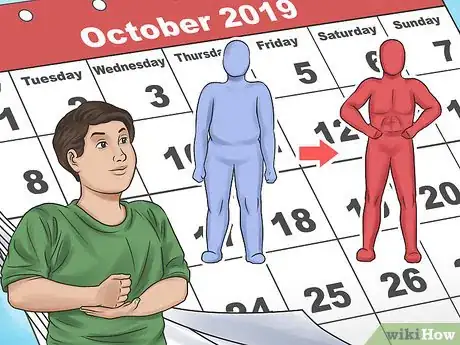


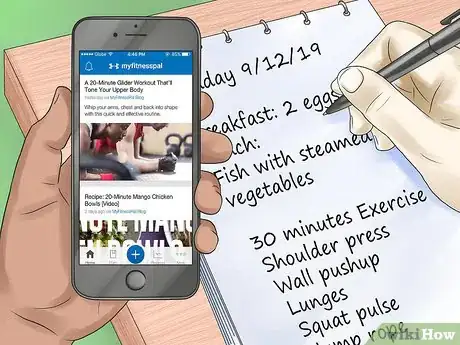

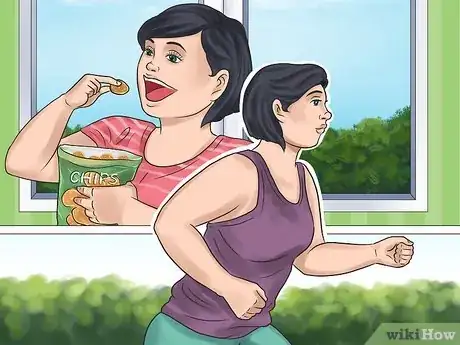

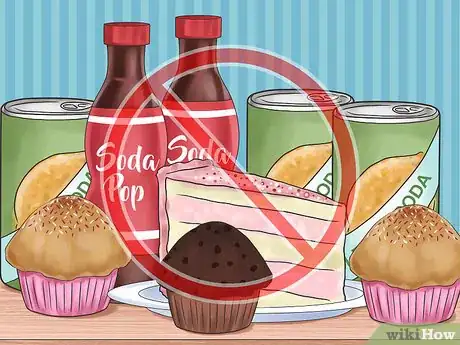
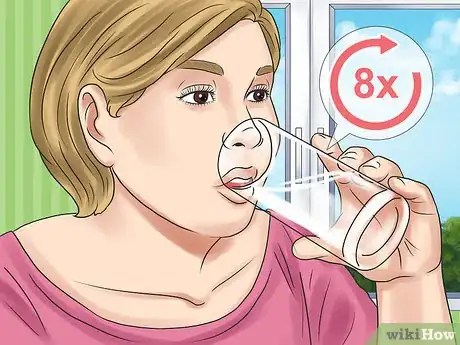

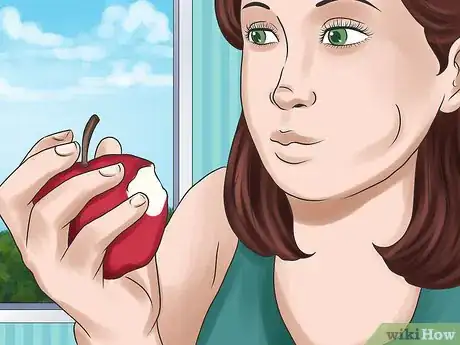
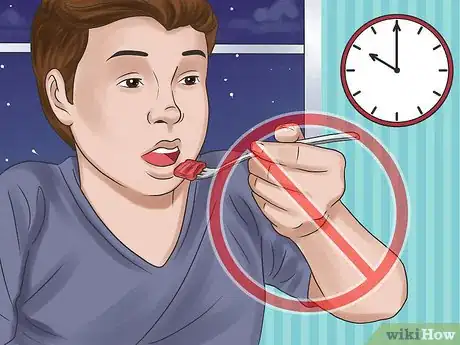
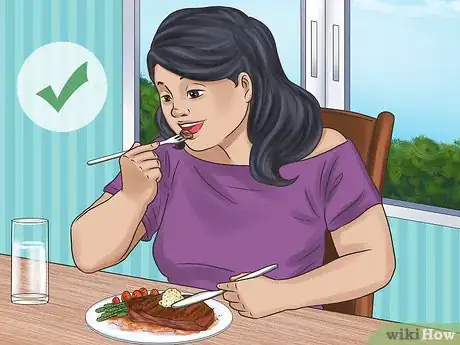
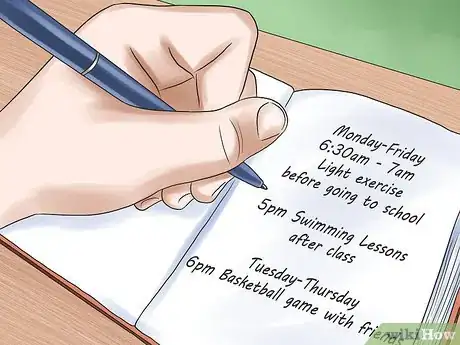


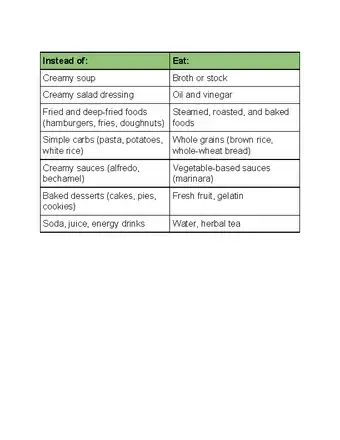
_sample.webp)
_sample.webp)

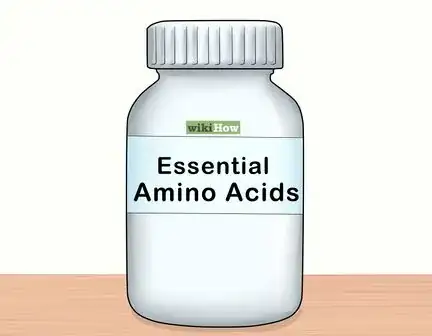
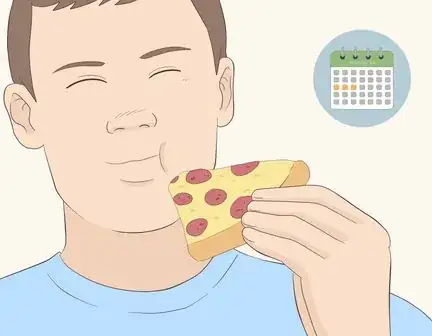

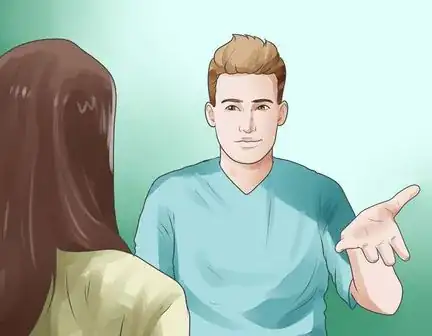
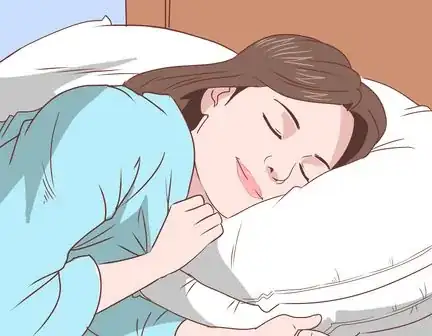
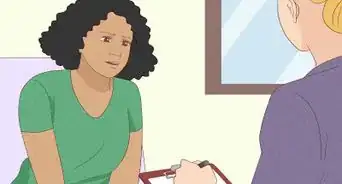
-Step-30-Version-3.webp)
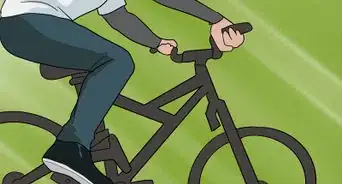
-Step-18.webp)
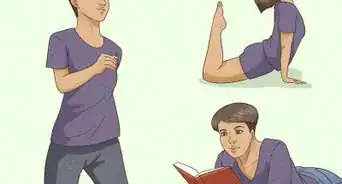
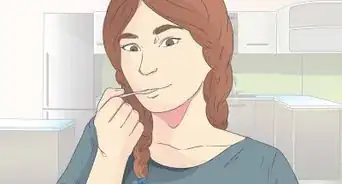

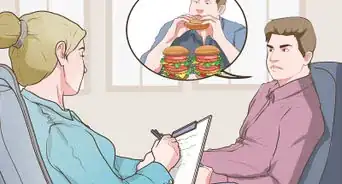
-Step-21.webp)
-Step-26.webp)
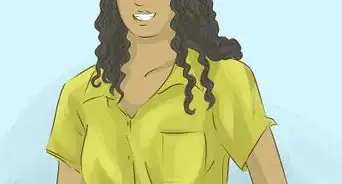













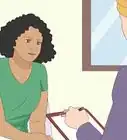
-Step-30-Version-3.webp)
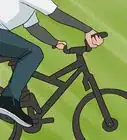
-Step-18.webp)


































